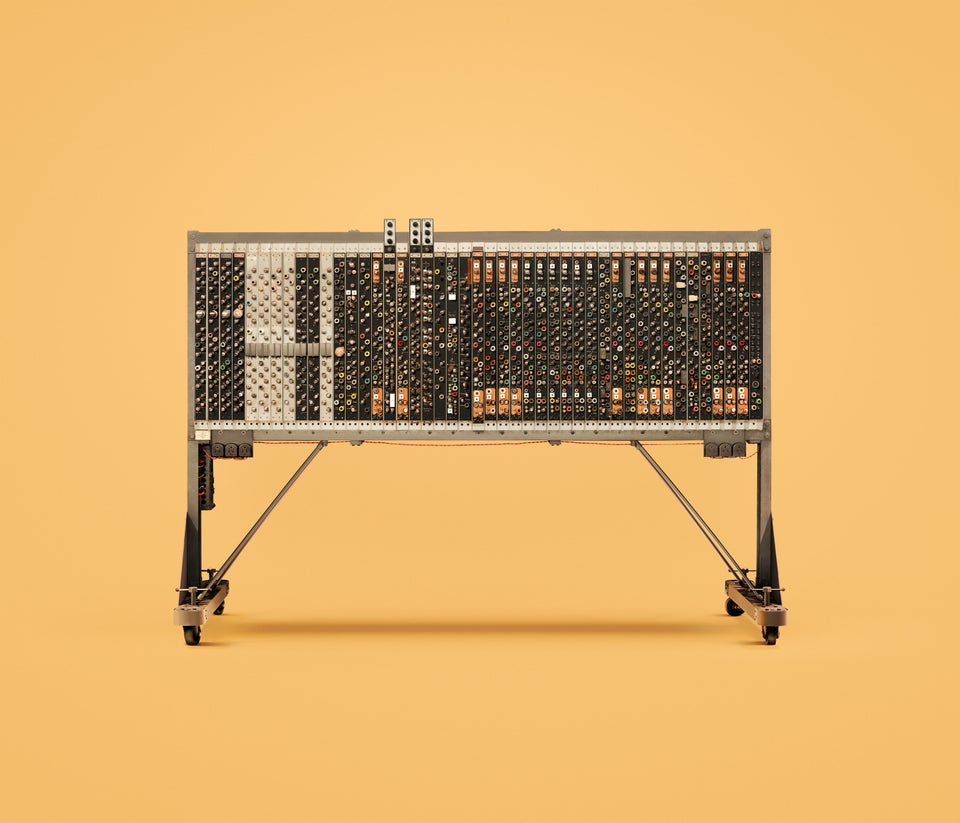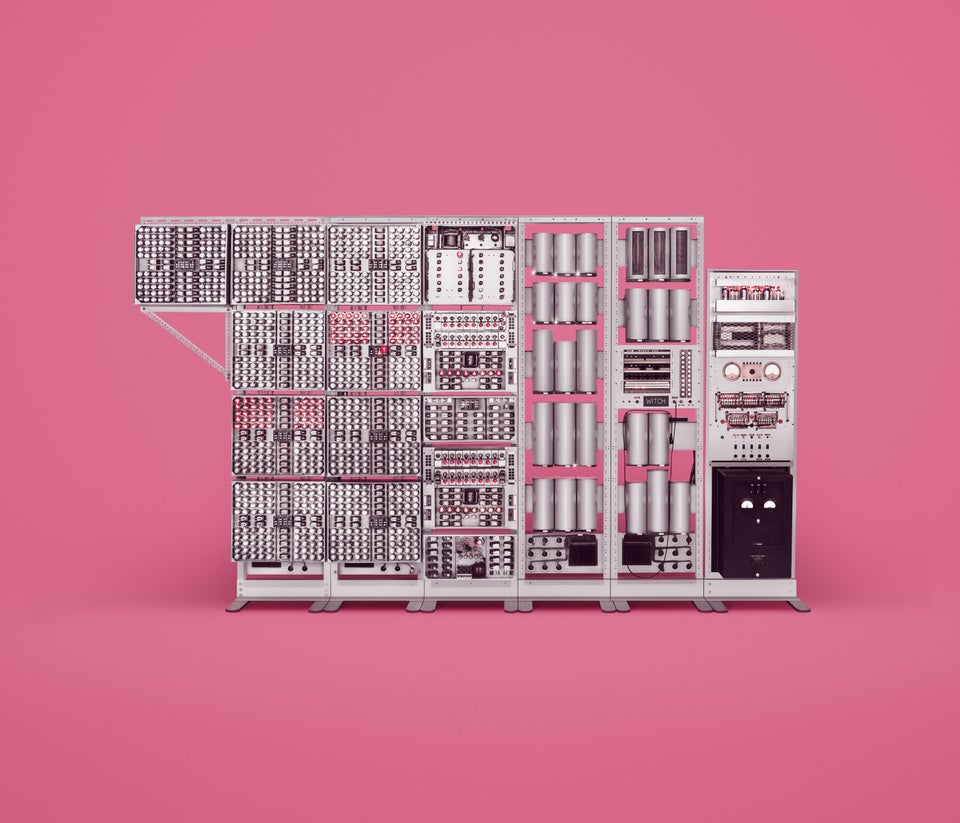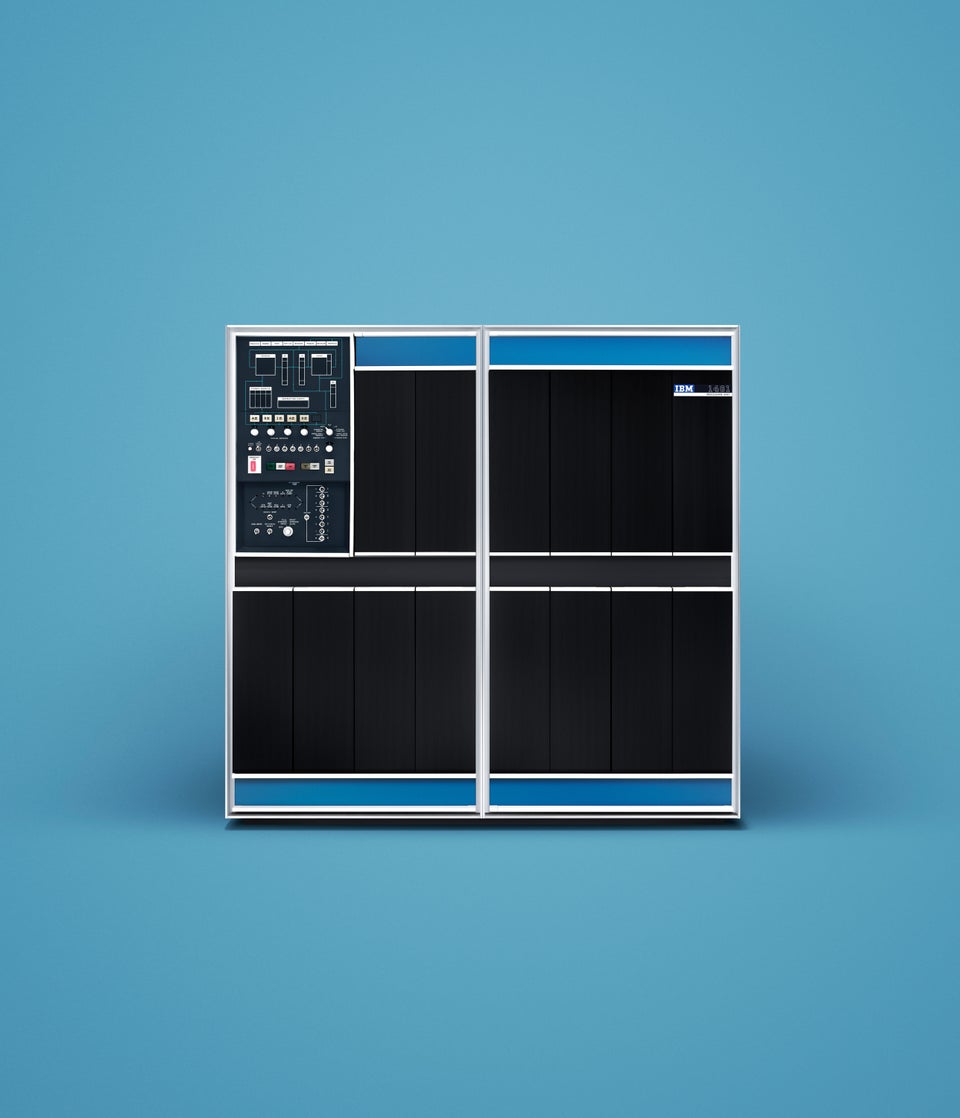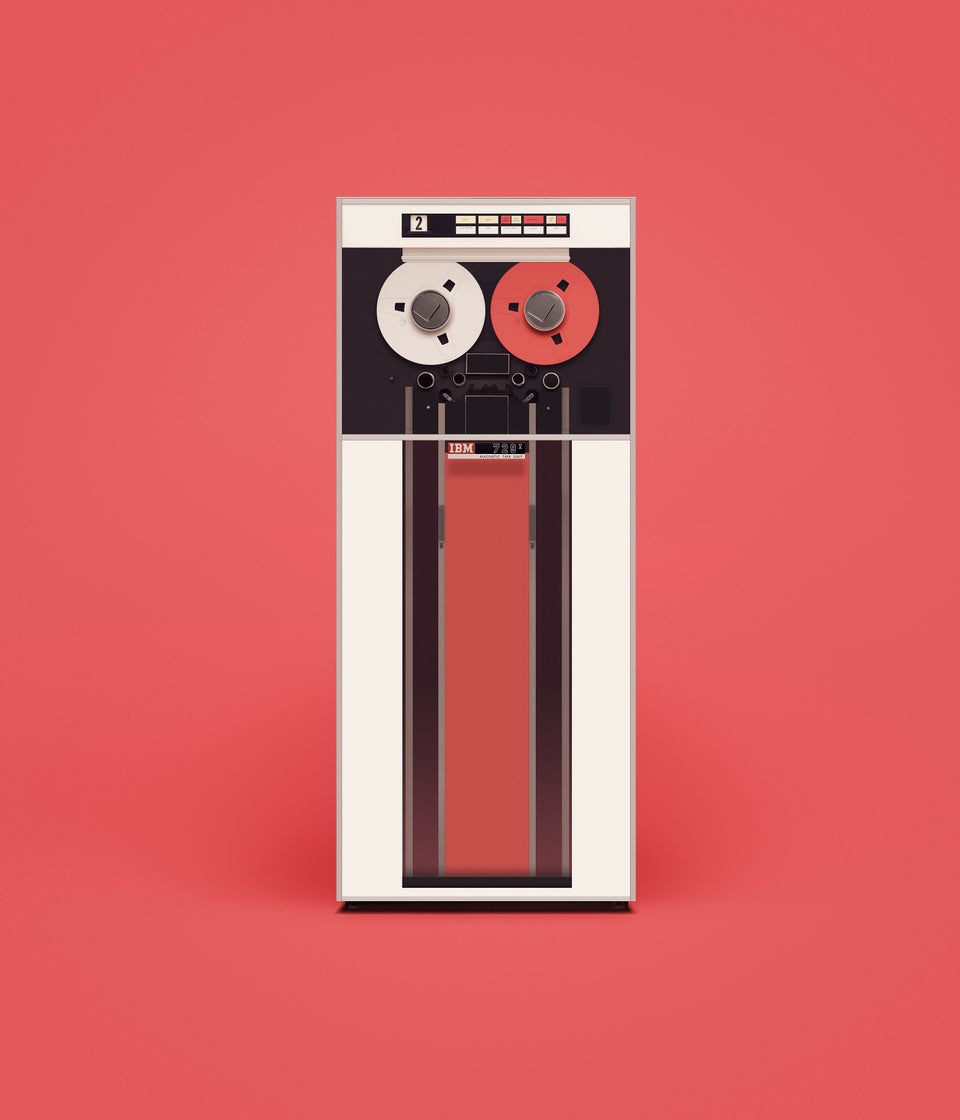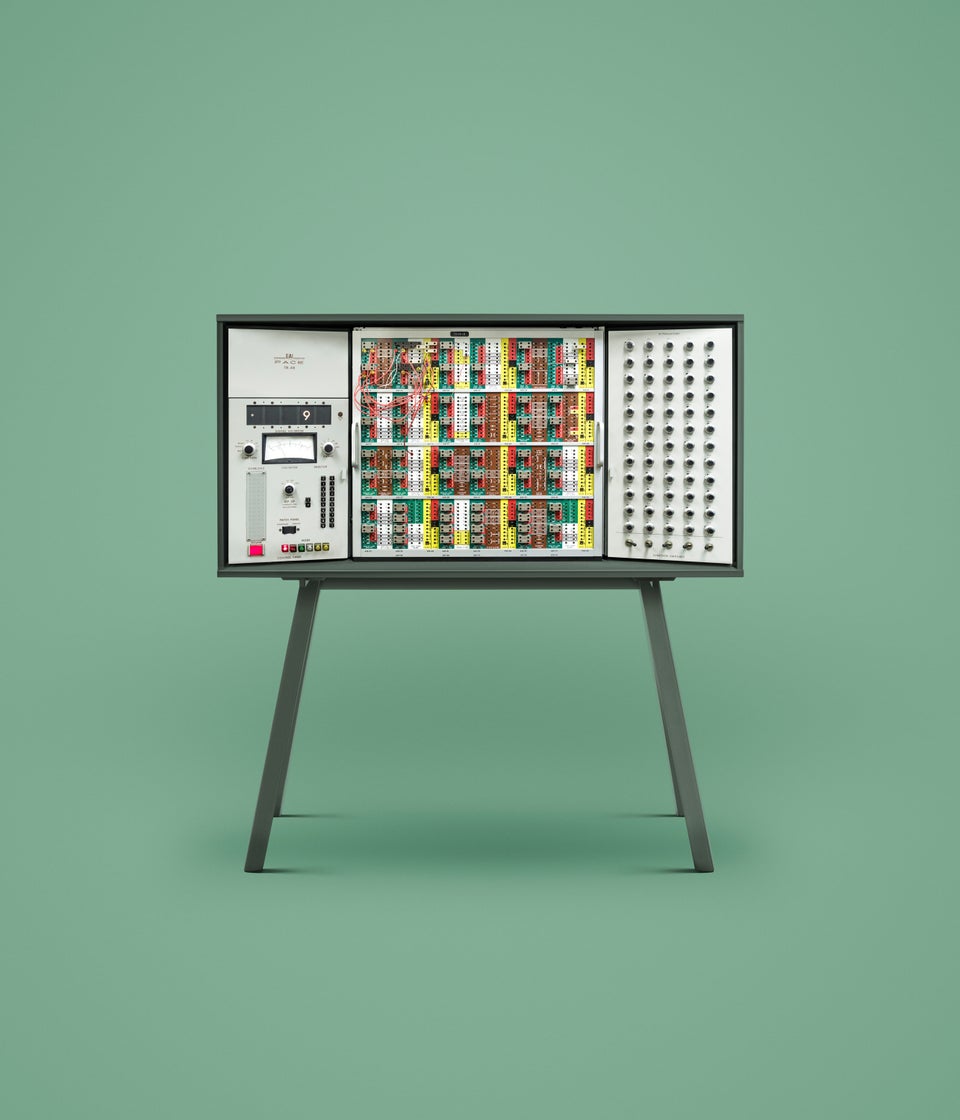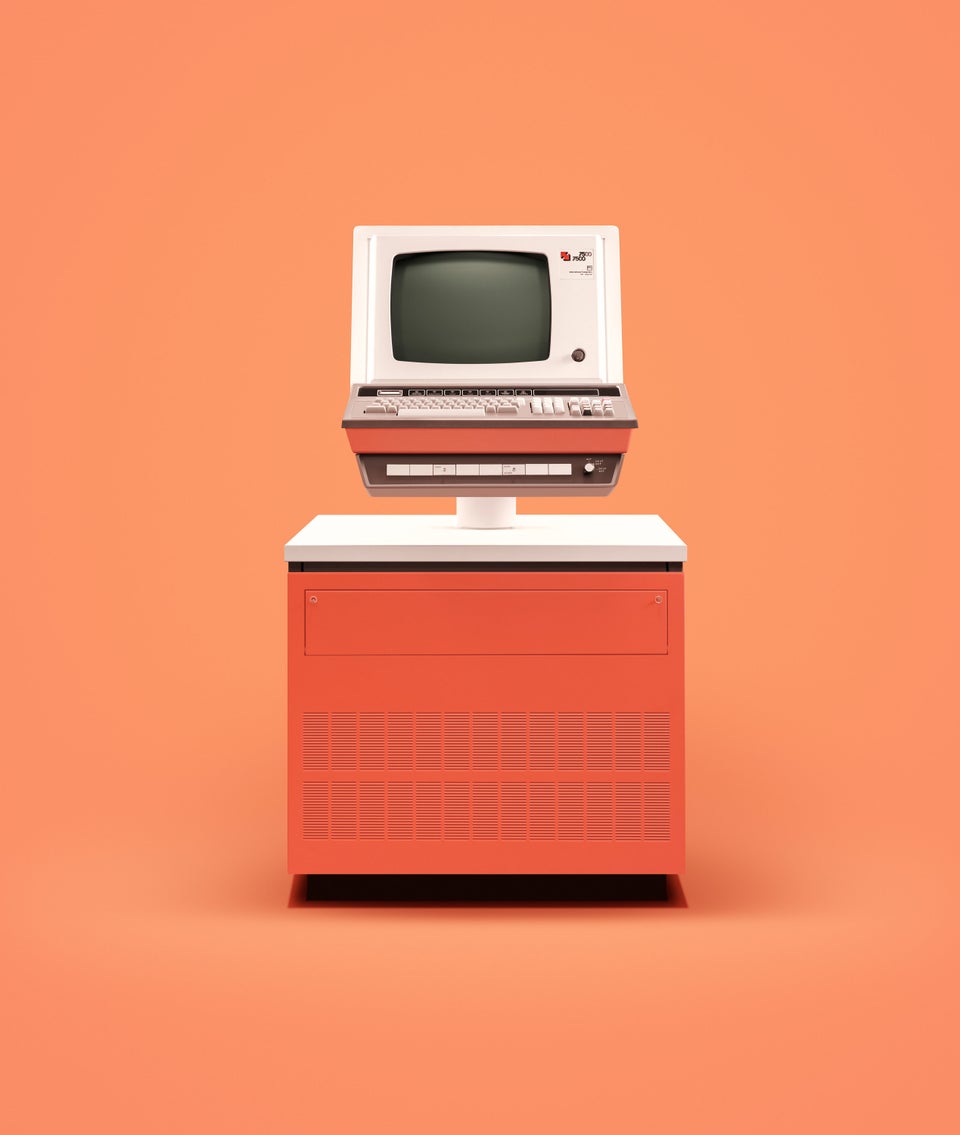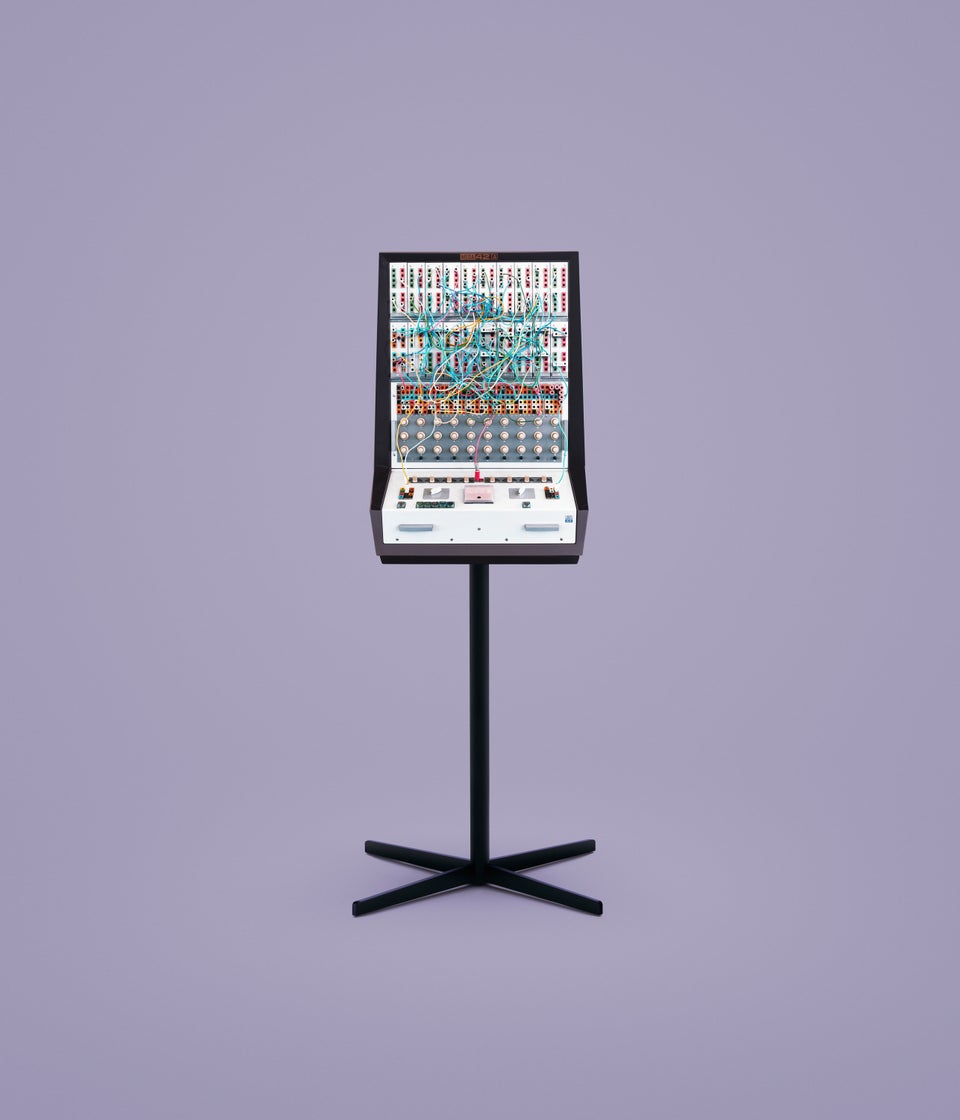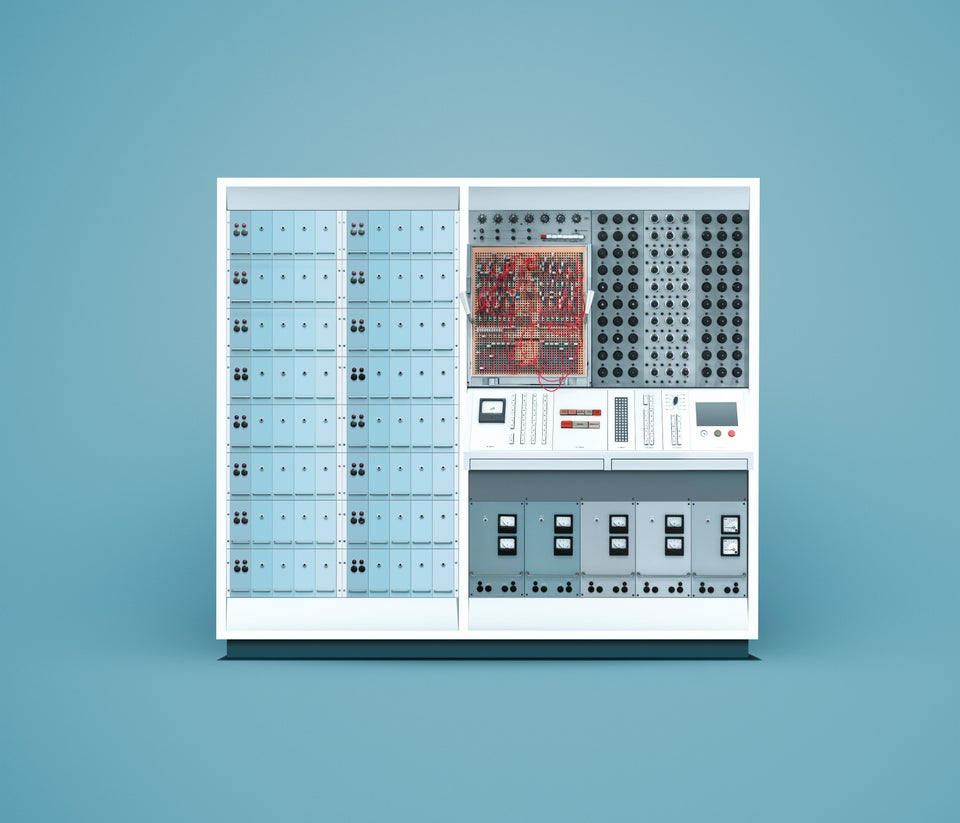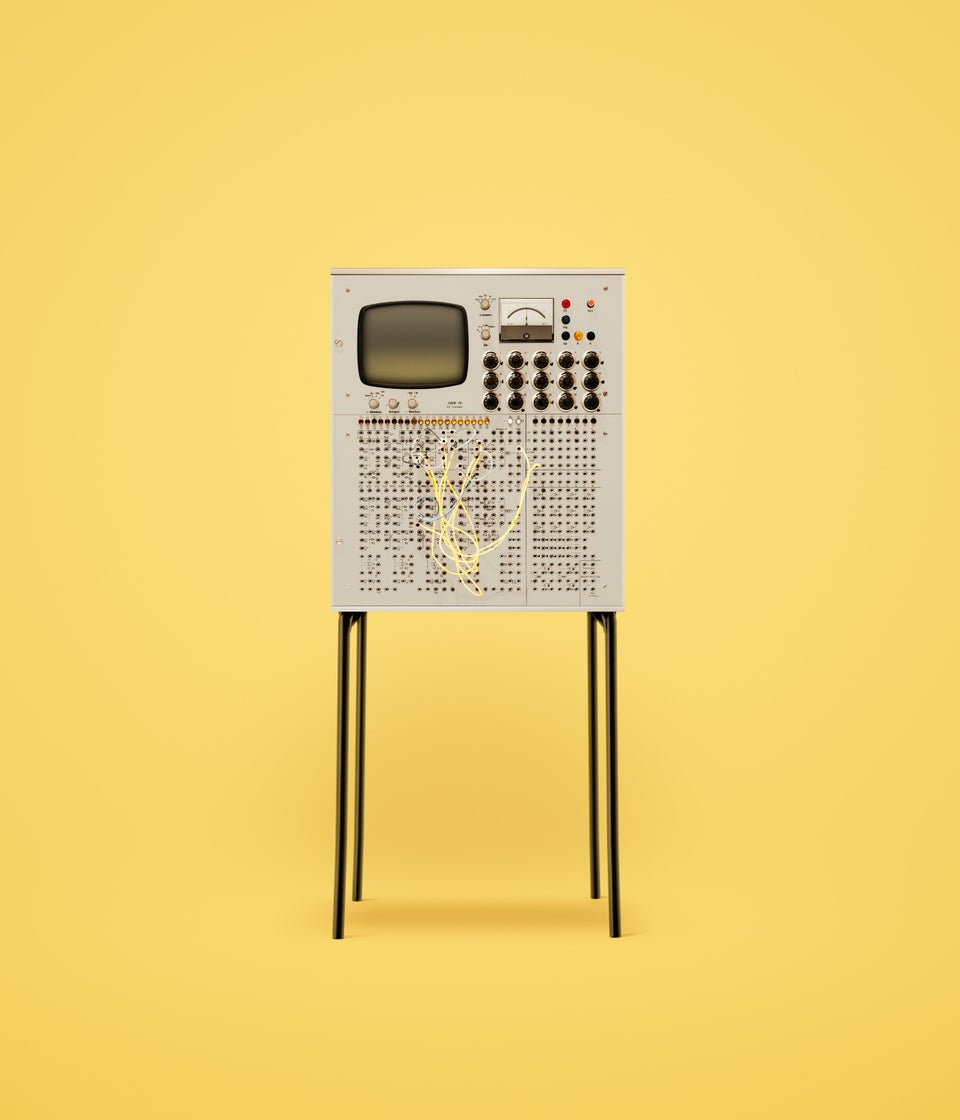Sending a text on an iPhone is an intuitive experience -- so intuitive that users take the ease of communication it allows for granted. We use our thumbprints to unlock a password-protected screen, click on a green button and type away. The action has become so ingrained in our daily habits that 8.3 trillion texts were sent in 2015 alone.
But long before the iPhone, and before Steve Jobs founded Apple, rising to success with his rounded, sleek personal technologies, computers weren’t so easy to interact with, let alone carry around. There were knobs and tubes, tangled wires and big screens. Certainly the average person couldn’t walk up to a '60s-era computer and make sense of how to use it. But that doesn’t mean the technology wasn’t revolutionary at the time and a cutting-edge step towards the devices we use today.
Paying homage to the computers of yore, photographer James Ball (aka “Docubyte”) teamed up with production company INK to take stylized “portraits” of machines throughout history, granting the clunky computers a poppy, consumerist sheen, as though they were the subjects of glossy ads.
The series reintroduces us to the world's fastest computer from 1964 to 1969, Control Data 6600, which is regarded as the first-ever supercomputer, and the EAI Pace, considered a desktop computer in the 60s, but big and cumbersome by today’s standards. Photographed in this vibrant context, the vintage computers are given due reverence as the forebears of our beloved laptops.
See what Ball had to say about the series below:
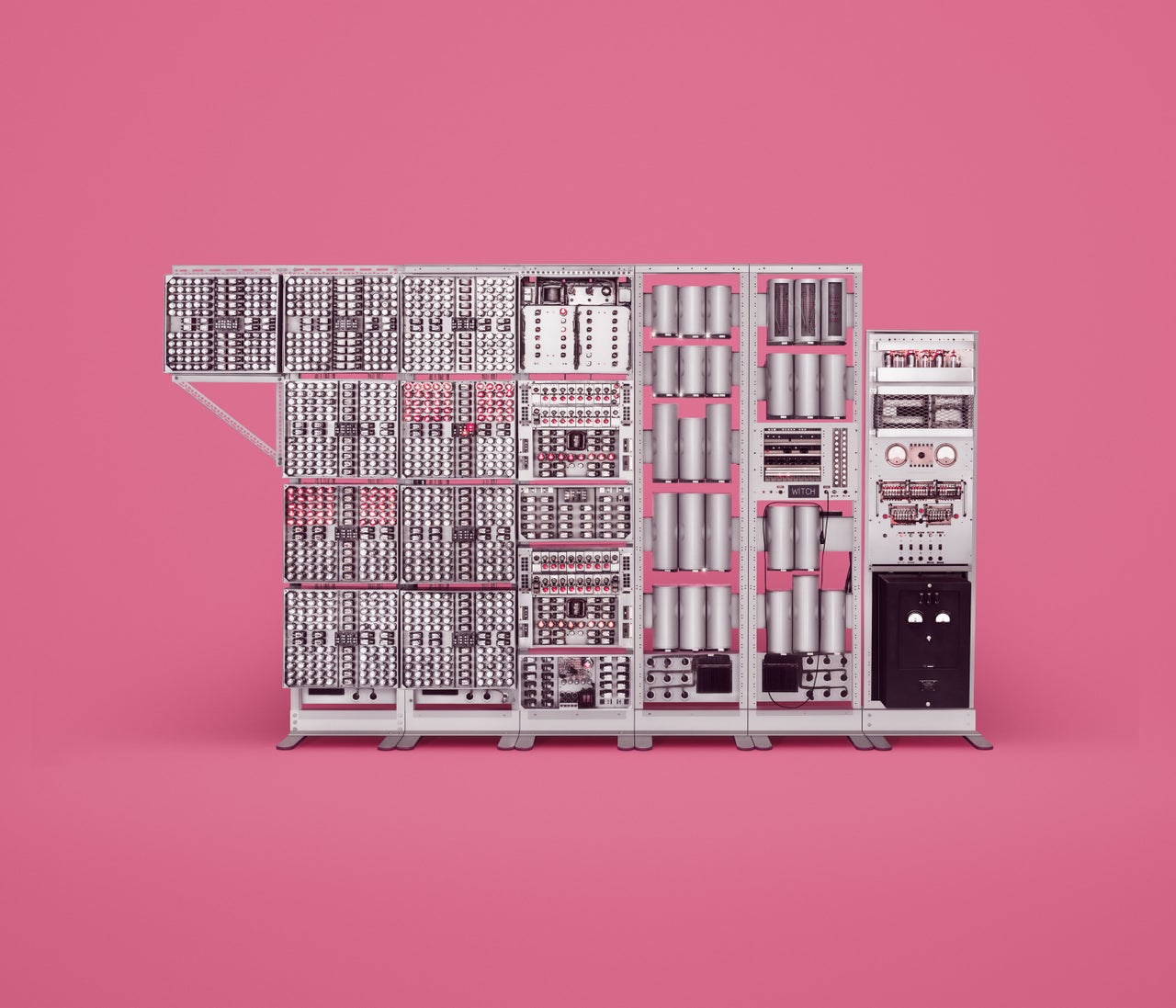
Why do you think it’s important to preserve the designs of old computers?
It’s only really now, in the era of high-tech pocketable technology that the significance of early computers is being so fondly realized. We carry machines in our pockets today with hundreds of times more power than those depicted in the series, replete with shiny screens and touch-based input -- we're not really familiar with the input characteristics of the machines from yesteryear. I love knobs and dials and buttons and wanted to celebrate that visually.
You chose bright, glossy compositions for these photos -- why did you choose to juxtapose the composition with the outdated designs?
I work as a photographer and art director and retoucher. The look is really a culmination of the time I've spent in visual commercial advertising, alongside a fondness for the original marketing imagery that accompanied some of these machines. It wasn't enough to just photograph them as is. A lot of the machines were in very poor condition and felt very much like antiquated museum pieces. I wanted to restore them to their former glory and recreate a timeless aesthetic akin to the advertising from the past while keeping the images clean, modern and supposedly, studio-based.
What interested you most about the design of outdated computers?
Well, the machines are huge, for one thing! All those knobs and dials cannot be ignored. Some designs are very [of their] period with vacuum tube upon vacuum tube, while others have a very retro, pop charm. It’s the vintage, analog knobs, dials and switches that really excite me. I want to play with them all.
What mood or theme do you hope viewers will experience when they see these photos?
A sense of nostalgic wonder, perhaps? That’s certainly the effect the machines have on me. I'm amazed by the things my iPhone can do, but I like to know how we got here.
